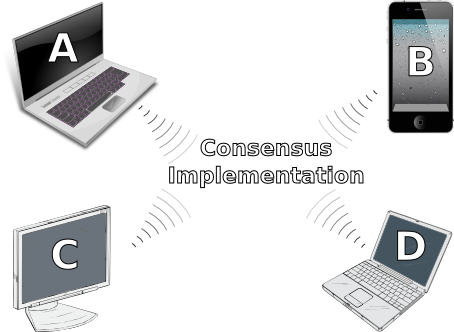This is an Open source consensus implementation specifically designed for the the context of D-MANETs.
This implementation is based on a variant of the
One-Third-Rule Heard-Of algorithm
, extending it with JOMS.
Before start using this consensus implementation, JOMS provider is required to be installed and configured on hosts. For installing JOMS, please refer here.

Do not worry! you are in the right place. The source code of this consensus implementation with many examples are now distributed under the terms of the GNU General Public
License. The source code consists of about 3000 lines of code. So good luck, and here is:
Here, I will present a code example demonstrating how to write a consensus application for D-MANETs. It is intended to be the quickest path to the consensus experience in such networks. So, sit back, relax and give the following example some thought.
import participantTable.*;
import nodes.ConsensusNode;
Session session=cFactory.createSession(...);
// ConsensusNode
ConsensusNode node=cFactory.createConsensusNode(...);
ConsensusNode node = pTable.lookup(...);
//list consensus nodes
Collection
You want to test our consensus implementation in real conditions but you do not want to burn yourself out writing too many applications. Okay, here is the solution. I offer you an interactive tools, called Console. This console provides you with the most commonly commands, i.e., create Sessions/ConsensusNodes, start/list Sessions, send Votes/Decides and the ParticipantTable commands. The console’s source code is available at consensusImpl/console directory.
Scenario
You can check the scenario in the following figure: there are four devices, named here A, B, C and D. All of these hosts are well-configured. And now, the following steps describe how to run the Console in the this scenario:

telnet localhost 8800
Congratulation! you can now use it. The following examples demonstrate how to use some of the console commands: